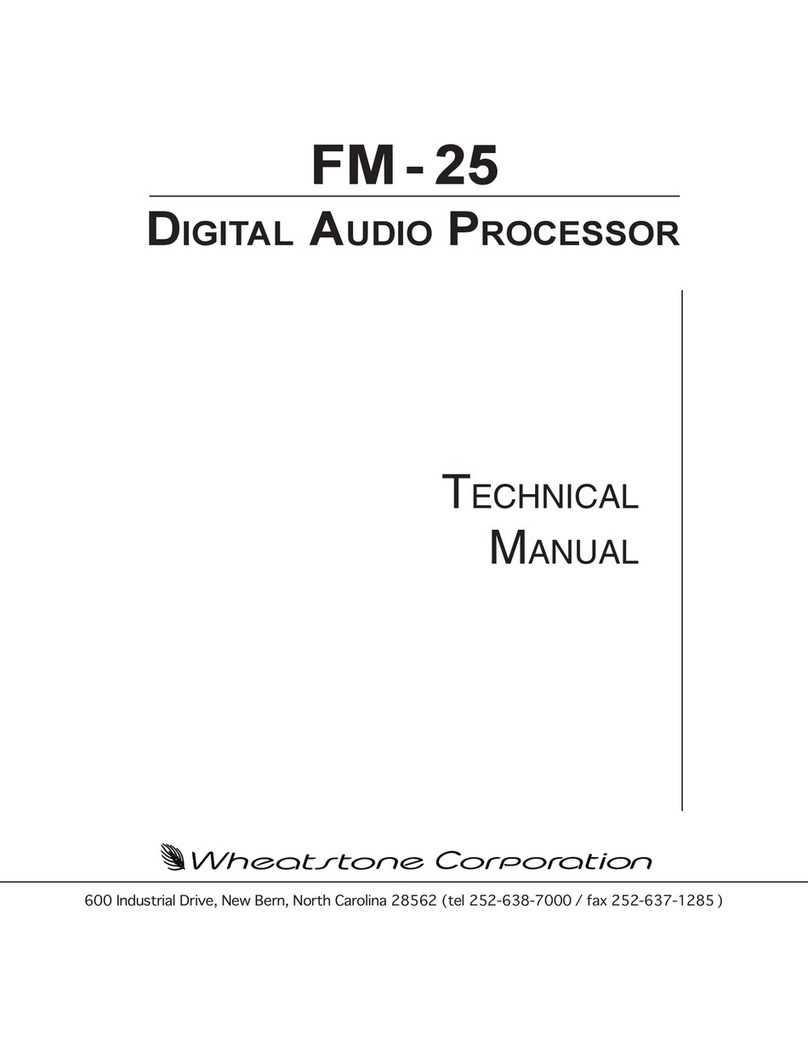
page Contents – 3
AM-55 / Sep 2015
CONTENTS
RTZ Down ......................................................................................................3-18
RTZ Up...........................................................................................................3-18
Multiband Leveller Controls................................................................................3-18
AGC Drive ......................................................................................................3-18
Gate Delay......................................................................................................3-18
Leveller Gate Mode ........................................................................................3-19
Leveller Gate Threshold .................................................................................3-19
Crossover Frequencies ..................................................................................3-19
Band Coupling and Key Band ........................................................................3-19
Multiband Leveller Dynamic Displays Menu.......................................................3-20
Threshold........................................................................................................3-22
Leveller Attack................................................................................................3-22
Leveller Release.............................................................................................3-22
Density............................................................................................................3-22
Compressor Attack.........................................................................................3-22
Compressor Release......................................................................................3-23
Ratio ...............................................................................................................3-23
AGC Mix .........................................................................................................3-23
MB Limiter Menu ....................................................................................................3-24
Limiters and Clipper Controls .............................................................................3-24
Enable Limiters...............................................................................................3-24
Multiband Limiter Drive...................................................................................3-24
Limiter Knee ...................................................................................................3-25
Bass Clipper Threshold ..................................................................................3-25
Enable ............................................................................................................3-25
Bass Style 2....................................................................................................3-25
Filter Shape ....................................................................................................3-25
Boost ..............................................................................................................3-26
Main Clipper Drive..........................................................................................3-26
Pre-Emphasis.................................................................................................3-26
AM Diversity Delay .........................................................................................3-26
Limiters and Clipper Dynamic Displays Menu ....................................................3-27
Attack..............................................................................................................3-27
Release ..........................................................................................................3-27
Final Clipper And Output Menu ..............................................................................3-28
Test Oscillator.....................................................................................................3-28
Positive Peak Threshold.....................................................................................3-28
Output Bandwidth...............................................................................................3-29
Digital Output......................................................................................................3-29
TX Outputs .........................................................................................................3-29
Polarity Invert......................................................................................................3-29
LF Tilt EQ ..........................................................................................................3-30
Adjusting The LF Tilt EQ ...............................................................................3-30
HF Correction ....................................................................................................3-31
System Menu..........................................................................................................3-33
Input/Output Settings Change With Preset.........................................................3-33
Send Metering Data Over TCP/IP ......................................................................3-33
System Status ....................................................................................................3-34
Security...............................................................................................................3-34
Remote Login .................................................................................................3-34
Front Panel.....................................................................................................3-34
GUI Access.....................................................................................................3-35
GUI Lock.........................................................................................................3-35




























